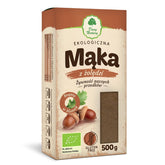Where can you find omega fatty acids?
Omega fatty acids come in three types: 3, 6, and 9. They are important components of a balanced diet, and their appropriate intake helps maintain good physical condition. The human body can produce unsaturated acids with a double bond on its own (this is the case with omega-9 acid), but it is unable to synthesize the necessary unsaturated acids with an additional bond. These types of substances are omega-3 and 6 acids, so you need to regularly include foods rich in them in your diet. Where are omega fatty acids found in the highest concentrations?
Contain omega fatty acids ?
If you were to ask a group of random people which foods contain omega acids, the most common answer would probably be fish, which would turn out to be very close to the truth. Individual unsaturated acids are found primarily in:
- Omega-3 The best way to supply this substance to the body is to regularly consume fish that live in cool waters. These include salmon, cod, mackerel, and herring. Omega-3 acids are also found in walnuts, chia seeds, and flaxseeds.
- Omega-6 – this acid is most easily supplied to the body by eating plenty of salads drizzled with sunflower, sesame, peanut, or olive oil. It's also worth adding pumpkin and sunflower seeds, almonds, and avocados to similar dishes to ensure a solid dose of omega-6 acid.
- Omega-9 – Although the body can produce this acid to a certain extent, it's worth consuming foods rich in this substance. Omega-9 acid is found in various types of oils (including rapeseed, corn, soy, and pumpkin seed oil), almonds, mustard, olives, and avocados. The correct ratio of omega acids is important.
Fundamentally, it's not just about the positive properties of individual omega acids, but also about their ratio in the diet. 5:1 or 6:1 – this is what a healthy nutritional ratio between the intake of omega-6 and omega-3 acids should look like. This is because omega-3 becomes anti-inflammatory due to metabolic changes, and omega-6 takes on the form of inflammatory hormones. An imbalance in the balance of these acids (usually in the form of too much omega-6) impairs the beneficial properties of omega-3, which cannot be fully activated.
The diet of most Poles is characterized by an inadequate ratio between these two popular fatty acids. Due to the very low fish consumption in the country on the Vistula River, the typical ratio in the diet of a typical Pole is as high as 12:1 in favor of omega-6 acid. Maintaining such a negative relationship between these substances over the long term can lead to unpleasant consequences, primarily in the form of decreased immunity and inflammation.
Should you choose to supplement with omega fatty acids?
Many people choose to supplement with omega fatty acids on their own, but such a decision should be made after consulting a doctor. Some studies suggest that a good diet rich in fish, seeds, and oils is sufficient to provide the body with adequate fatty acids. Others indicate that supplementation is useful for maintaining the correct ratio of omega-3 to omega-6 fatty acids. But regardless of an individual's decision to supplement, you should consume a large amount of fatty acids in your diet to properly fuel your mind and body.
THE PUBLISHER'S CHOICE
Dried plums 1 kg BIOGO
- £6.08
- £6.08
- Unit price
- / per
Dried White Mulberries 500 g ORGANIC
- £5.07
- £5.07
- Unit price
- / per
Almonds 1 kg BIOGO
- £10.15
- £10.15
- Unit price
- / per
Cranberries sweetened with apple juice organic 1 kg BIOGO
- £14.21
- £14.21
- Unit price
- / per
Dried dates 1 kg BIOGO
- £3.65
- £3.65
- Unit price
- / per
Unpeeled buckwheat groats 1 kg BIOGO
- £2.44
- £2.44
- Unit price
- / per
Walnuts 800 g BIOGO
- £7.51
- £7.51
- Unit price
- / per
Peeled sunflower seeds 1 kg BIOGO
- £2.64
- £2.64
- Unit price
- / per
PULLED ORGANIC SUNFLOWER SEEDS 1 KG BIOGO
- £3.85
- £3.85
- Unit price
- / per












































































































































